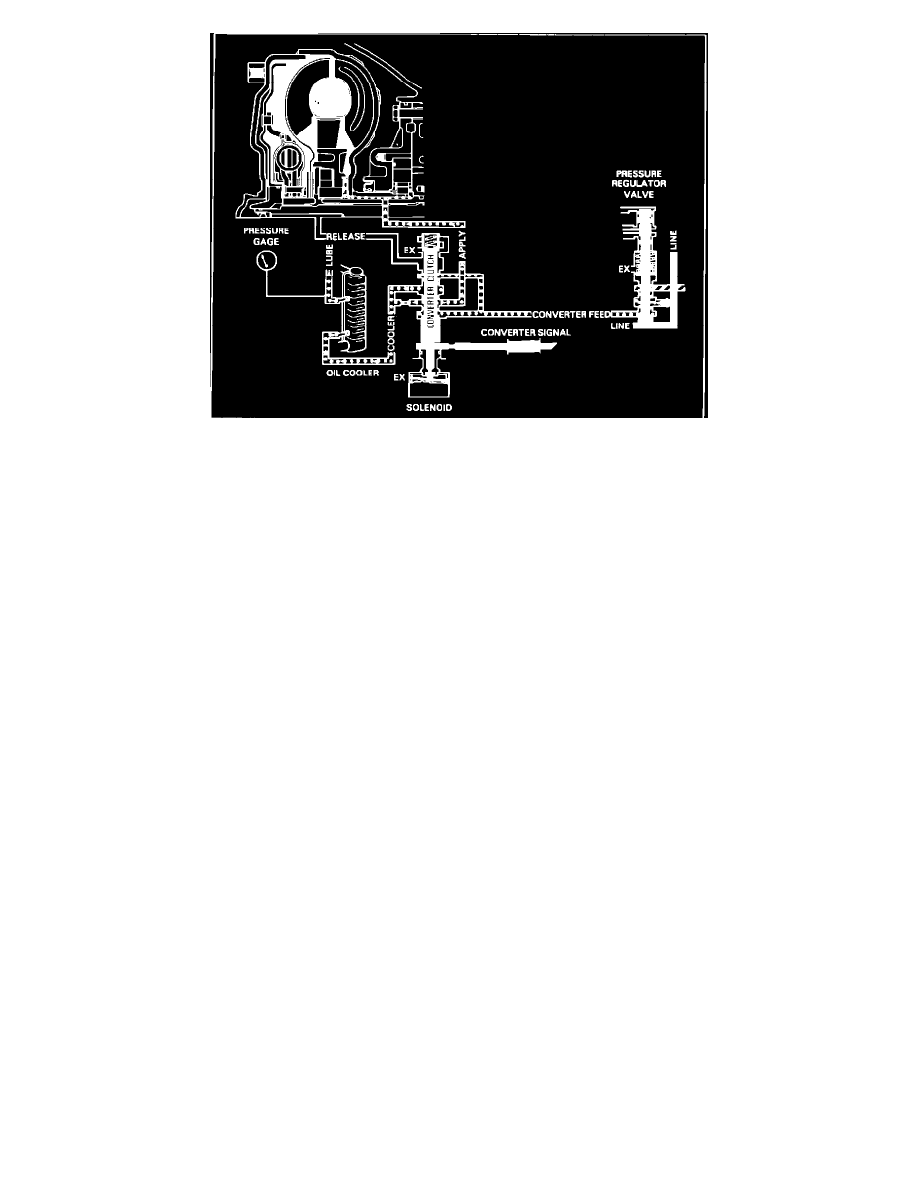Fleetwood V8-252 4.1L VIN 8 FI (1983)

FIGURE 3 - Converter Clutch Applied (THM 200-4R Shown - THM 325-4L Typical)
C.
Converter Clutch in Applied Position (refer to Figure 3) - When enable conditions are met the ECM grounds circuit 422 and energizes the
TCC solenoid. With the solenoid energized signal off is not allowed to exhaust and overcomes the converter clutch apply valve spring,
shifting the valve and changing the direction of the converter feed off. The converter clutch apply valve will now send converter feed oil into
the apply passage. The apply off will charge the converter with oil and force the converter clutch pressure plate against the converter cover,
causing a mechanical link between the engine and transmission. At the same time the converter clutch apply valve will direct some converter
feed off through an orifice to the transmission cooler in the radiator. Oil returning from the cooler, is then directed to the transmission
lubrication system.
On early 1982 Cadillacs, a converter clutch shift valve and converter clutch TV valve were also in the control valve assembly. These valves
were designed to control the speed at which the TCC would apply. Since TCC apply speed is controlled by the ECM on Cadillacs equipped
with HT4100 engines, the converter clutch shift valve and converter clutch TV valve were no longer necessary and, therefore, eliminated. For
further information regarding the elimination of these valves, refer to Serviceman Bulletin 84-25, Group 7, No. 91.
IV. Code 39 Test Conditions
Once the ECM has given an enable command to apply the TCC, the ECM will continually check vehicle speed and engine RPM to determine if the TCC
is operating properly. To do so, all enable conditions must be met and vehicle speed must be between 50 and 56 MPH at a steady throttle.
When these conditions are met, the ECM will cheek the engine RPM. If the RPM is greater than the value shown in the table below for a period of seven
seconds or more, a Code 39 will set and turn on the "Service Soon" light (for 1982 vehicles, "Check Engine" light will tum on and Cruise Control will
disengage) because a greater RPM indicates TCC apply has not occurred.
Standard
Altitude
Axle
Axle
E/K
1672
1784
C
1768
1928
If the conditions are not met, the BCM will not test for Code 39 even though an inoperative TCC condition may exist. For example, if the vehicle is
being driven above 56 MPH, Code 39 will not be set even if the TCC is not able to engage. This can also make a Code 39 appear to be "intermittent" and
difficult to reset, even if TCC is completely inoperative. Therefore, when testing the vehicle, it must be driven under the specific test conditions to reset a
code. In addition, the BCM will not test for a Code 39 or any other code while in diagnostics.
V.TCC Diagnosis
The following procedure was developed to systematically test and diagnose TCC operation and should be followed in the listed sequence to
accurately diagnose this system.
